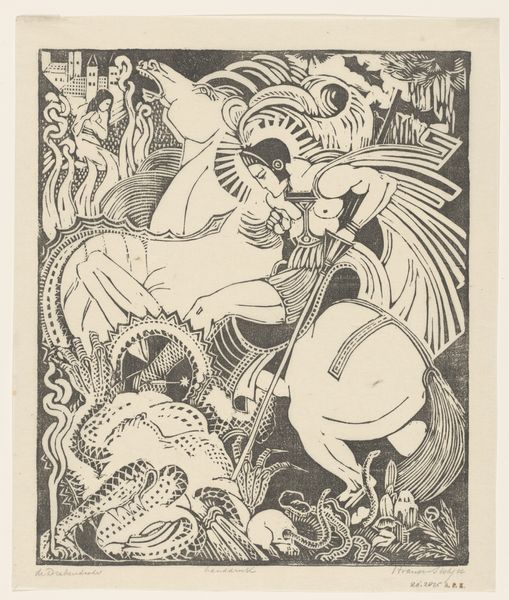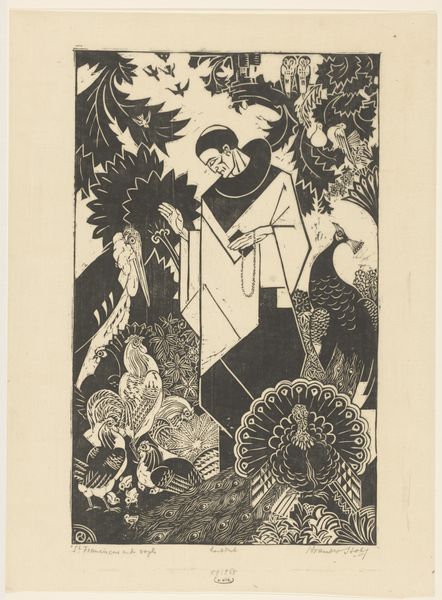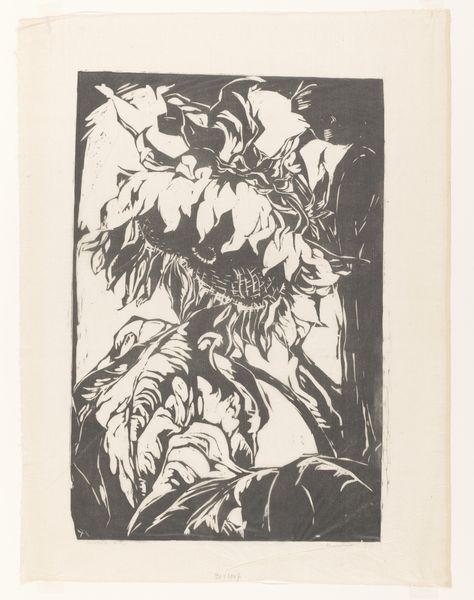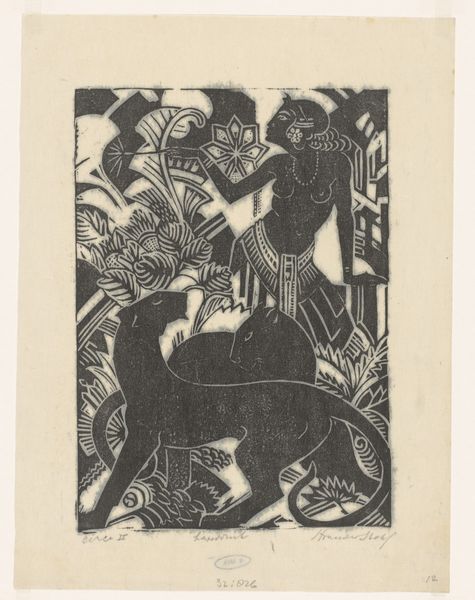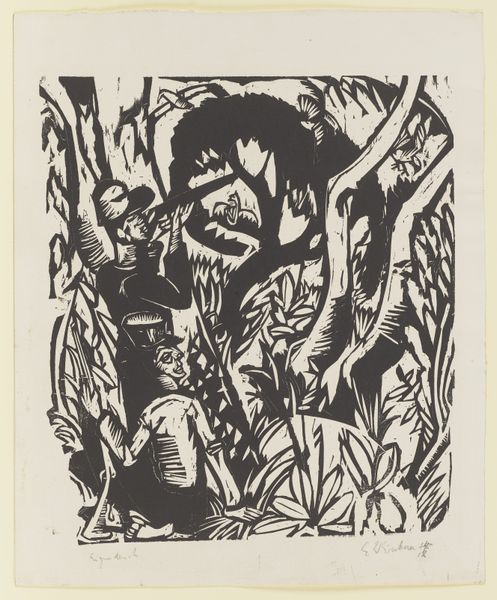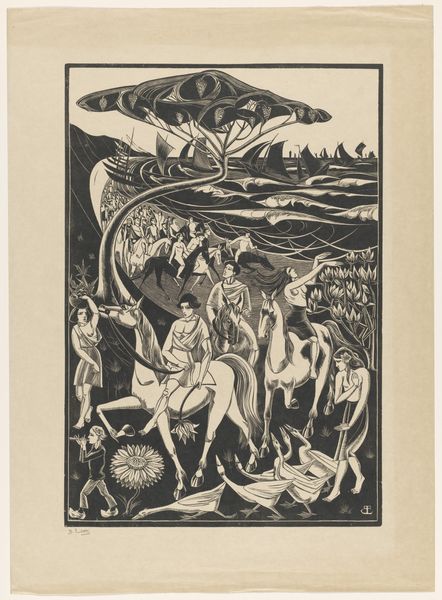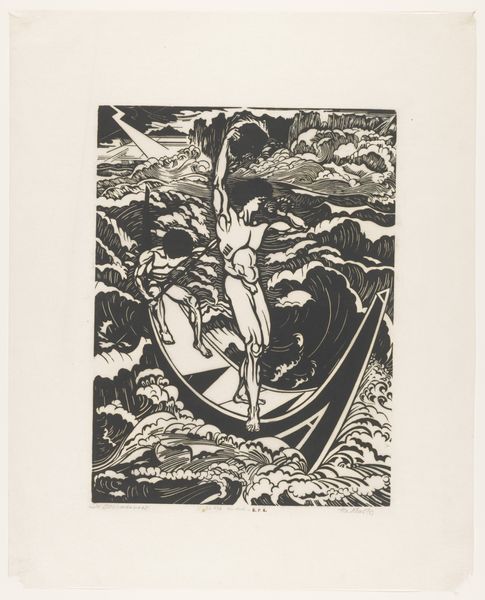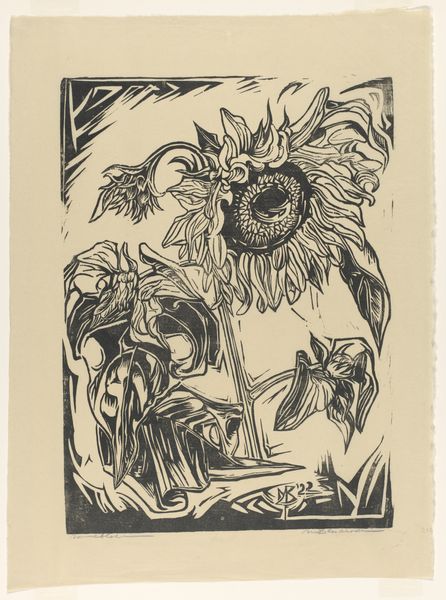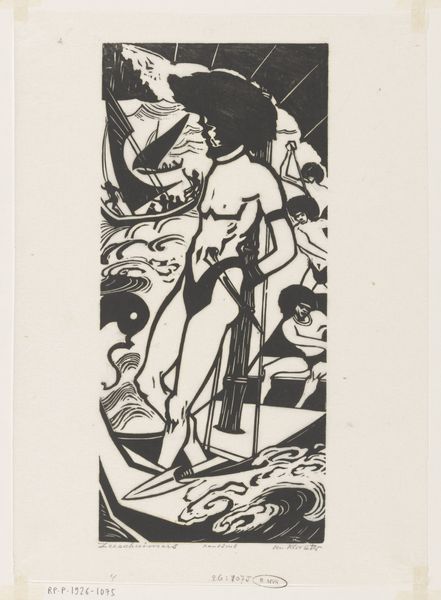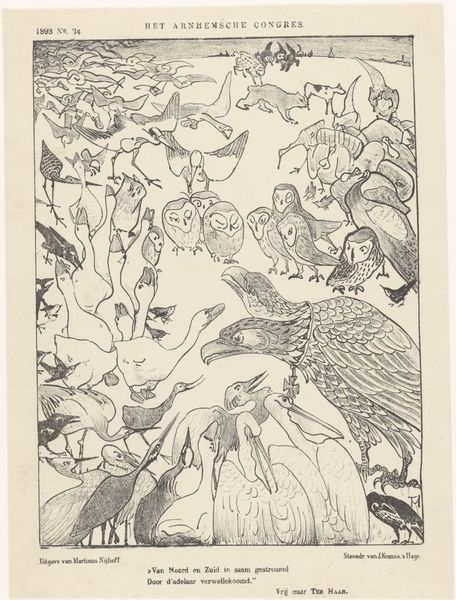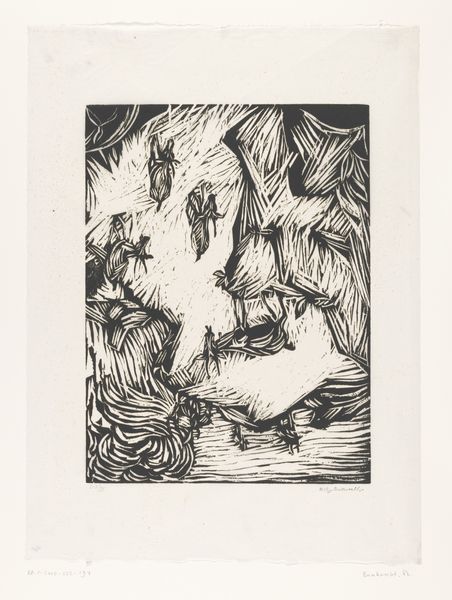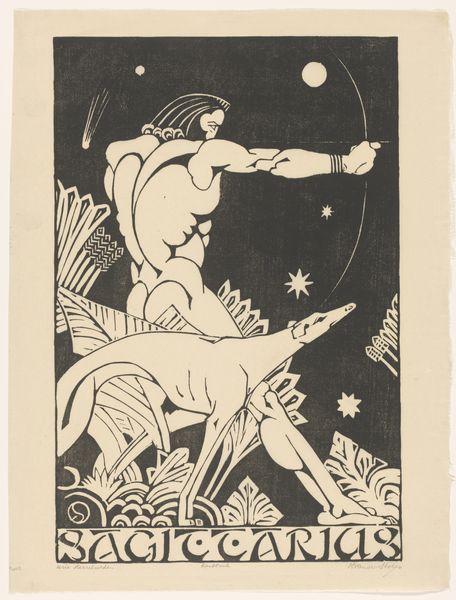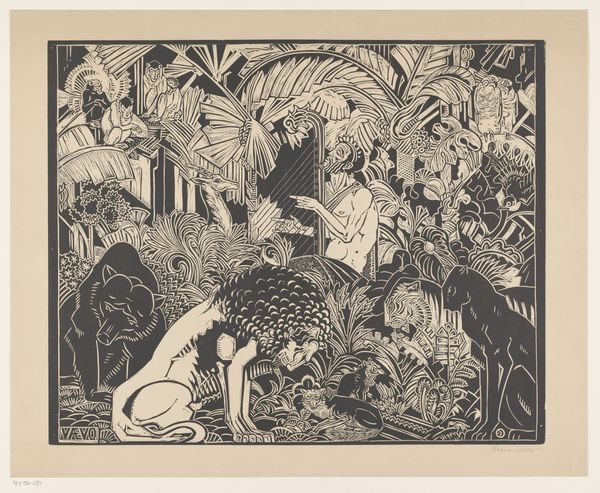
graphic-art, print, relief-print, decalcomania, ink, woodcut
#
graphic-art
# print
#
pen illustration
#
relief-print
#
landscape
#
figuration
#
ink line art
#
decalcomania
#
ink
#
pen-ink sketch
#
woodcut
#
line
#
symbolism
#
northern-renaissance
Dimensions: height 405 mm, width 282 mm
Copyright: Rijks Museum: Open Domain
Editor: Henri van der Stok’s “De schoone buit,” created sometime between 1880 and 1920, is a striking relief print with bold lines and stark contrast. The composition feels dense, almost claustrophobic, with figures interwoven with the landscape. What's your perspective on it? Curator: This piece presents a compelling look at the means of production intertwined with its social context. The medium itself, the woodcut, democratizes art through printmaking, making it more accessible to a wider audience. Considering its time, what social structures do you think van der Stok may have been reacting to by creating multiple of this image? Editor: The woodcut seems like a more democratic medium when we look at the early 20th century! But why focus on what’s beyond the image, rather than analyzing, say, symbolism? Curator: Symbolism and iconography are valid avenues for interpretation, but I'm more interested in exploring the artwork as a product of labor and materiality. The bold lines you noted, created through the physical act of carving wood, speaks volumes about the artist's process and the cultural value placed on handmade objects versus mass-produced items. Where does van der Stok’s work fit into the consumption patterns of art in the late 19th and early 20th century? Editor: Hmm, that's a good question. With the rise of industrialization, maybe this was van der Stok's way of reaffirming the importance of craft, the handmade? Curator: Precisely. The act of physically making the print—the labor involved—becomes an important statement, questioning the emerging dominance of industrial processes and mass production within society. Editor: I see your point. By considering the materials and the production process, we can uncover layers of meaning about the artist's intentions and the piece's relationship to broader cultural and economic forces. Curator: Indeed. This lens invites us to consider art not just as an aesthetic object, but as a material expression of social and economic conditions. It shifts our focus from mere image to tangible realities.
Comments
No comments
Be the first to comment and join the conversation on the ultimate creative platform.
